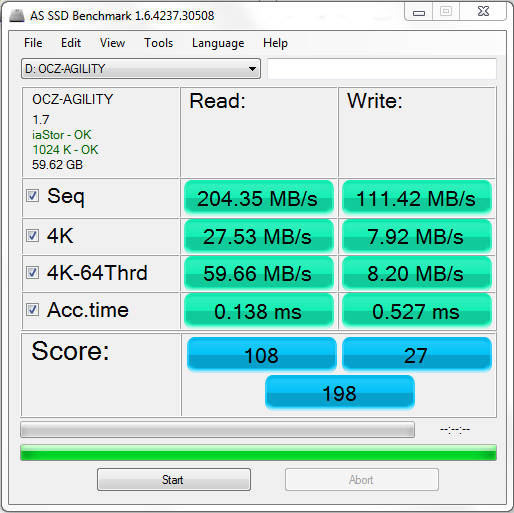In May of 2011, OCZ announced a new type of firmware for Indilinx-controlled drives. That firmware, named for a type of carnivorous fish, carried the name Arowana Flash Translation Layer.
The Arowana FTL eventually made its way into the Vertex Plus family, however, enthusiasts with the original Barefoot-controlled drives would have to wait until now, ten months later, to get a chance to update their SSDs.
OCZ has a good track record of supporting it’s drives through firmware, and the three-year-old Vertex has seen countless FW releases since early 2009. Recently, OCZ’s Octane drives were given a new FW release which increased random write IOPS by a healthy margin.
OCZ used the Indilinx Barefoot controller in the first Vertex and it’s variants (Turbo and EX). Later, similar drives like the Agility, Solid 2, and Colossus drives were released. Owners with SSDs manufactured after December of 2009 can give the update a shot through a Windows-based updater.
For more information on the update process and how to determine whether your SSD is Arowana compatible, see the OCZ forum post. The Arowana 3.55 FW will not work on all drives, so prospective users will have to do some research first.
There are two things to keep in mind before you update. First, the update is destructive, so be sure to back up any data first. Secondly, the Arowana FW adds over-provisioning, so around 7% of capacity will be set aside for performance and longevity purposes after the update. That’s not a bad thing, but you will have a few less GB to play with.
AS-SSD AND CRYSTAL DISKMARK
So does the update really make a difference? To find out, a 64GB OCZ Agility with 34nm Intel NAND got the Arowana treatment.

 The changes don’t look all that drastic at first. The 4K random write throughput is much improved over older Indilinx FW, just as OCZ had claimed over 10 months ago. Interestingly, AS-SSD’s 512 byte access times are much, much better with Arowana 3.55. Access times are arguably more important and one of the greatest contributors to the tangible speed difference of SSDs. In that respect, the improvements seen in AS-SSD are promising.
The changes don’t look all that drastic at first. The 4K random write throughput is much improved over older Indilinx FW, just as OCZ had claimed over 10 months ago. Interestingly, AS-SSD’s 512 byte access times are much, much better with Arowana 3.55. Access times are arguably more important and one of the greatest contributors to the tangible speed difference of SSDs. In that respect, the improvements seen in AS-SSD are promising.

 Crystal DiskMark shows more of the same, but here the 4K random read drop is slightly more pronounced. The large sequential reads and writes are better, and the 4K random writes are still looking much better. Low queue depth 4K random writes are quite important, and better performance here can help to make a drive feel snappier. It is important to note that Barefoot drive performance profiles change with the amount of NAND on board, so larger or smaller drives may see different results.
Crystal DiskMark shows more of the same, but here the 4K random read drop is slightly more pronounced. The large sequential reads and writes are better, and the 4K random writes are still looking much better. Low queue depth 4K random writes are quite important, and better performance here can help to make a drive feel snappier. It is important to note that Barefoot drive performance profiles change with the amount of NAND on board, so larger or smaller drives may see different results.
PC MARK VANTAGE
Both of the above benchmarks show some of the changes between Arowana 3.55 and the original 1.7 firmware. One more benchmark may show that the changes are more than just skin deep.
Before: Here is the 64GB Agility on 1.7FW, before the Arowana update.
 After: And this is the same drive on the new 3.55 Arowana FTL.
After: And this is the same drive on the new 3.55 Arowana FTL.
 The SSD Review The Worlds Dedicated SSD Education and Review Resource |
The SSD Review The Worlds Dedicated SSD Education and Review Resource | 
It always blows my mind how just some software rewriting can handedly increase performance of hardware you’ve already purchased. Kudos programers, kudos to you